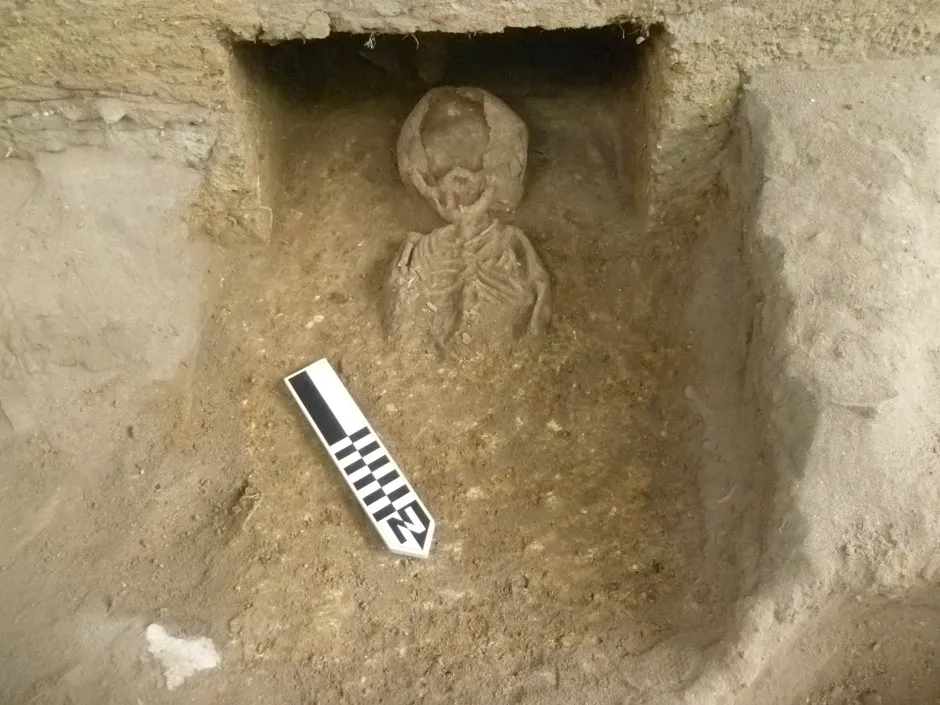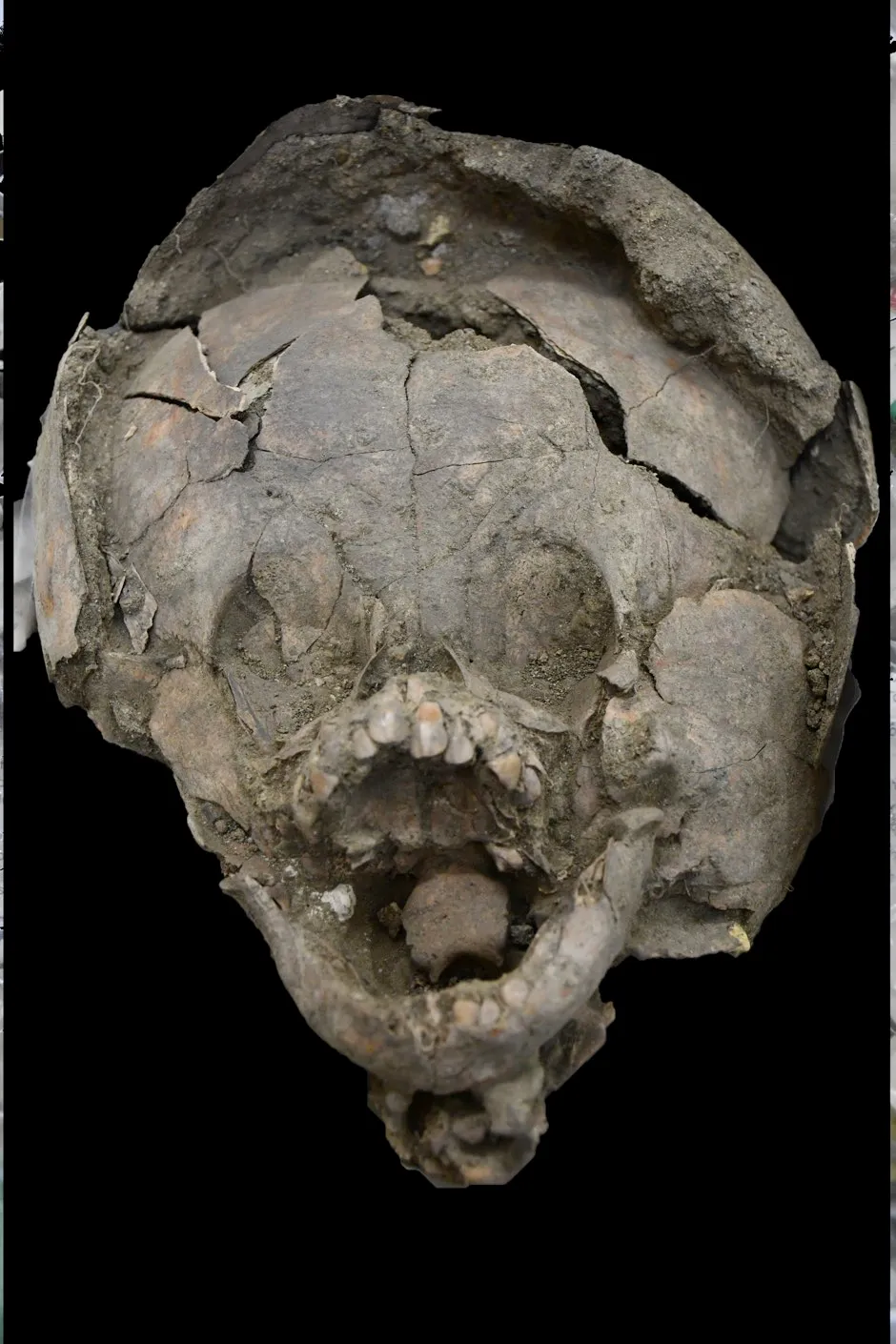Archaeologists have unearthed the skeletons of two infants that were buried wearing the skulls of older children like helmets in Salango Ecuador.
The roughly 2100-year-old skeletons were found in burial mounds constructed by the Guangala people – a civilisation based on the southwest coast of Ecuador that dated from around 100BC to 800AD by a team based at the University of North Carolina at Charlotte.
One of the infants is estimated to have been about 18 months old at the time of death and was buried wearing the skull of a child between four and 12 years old. The other was between six and nine months old is was buried wearing the skull of a child between two and 12. Both of the headpieces were fashioned from the neurocranium, or braincase.
“The fact that both layers of crania were made from juveniles struck me as particularly odd. Adult skulls were regularly manipulated in different ways in the pre-hispanic Andes, but child skulls are less commonly involved,” said research lead Ass Prof Sara Juengst of the University of North Carolina at Charlotte.
Read more about archaeology:
- 'Genetic legacy' of Inuit sledge dogs revealed
- Ancient humans stored bone marrow in earliest example of preserved food
“The skulls were fairly well preserved, although fragmentary from normal erosional processes associated with being buried. The outer skulls had straight edges, suggesting they had been cut, although only one cutmark was found.”
It’s unclear why the children were buried in this way, although headswere commonly depicted in the iconography, pottery, and stone work of pre-Columbian South America, Ass Prof Juengst says.

Children were also seen as being of special ritualistic importance by manyAndeangroups as in the Incan practice of sacrificing of children on mountaintops, though there isn't any evidence that the children here were sacrificed.
The infants were buried just above a layer of volcanic ash, which likely indicates a volcanic eruption took place shortly before the burial. This could have led to a loss of crops and eventual famine, Ass Prof Juengst says. This theory is backed up by both skeletons showing clear evidence of severe disease or malnourishment prior to death of the children.
“For modern people who are horrified by these findings, I would remind them that our conception of death is based in our modern medical, religious, and philosophical views. Guangala people had their own conception of the cosmos and what happens after death, and the significance of human bodies,” said Ass Prof Juengst.

“While we are usually averse to handling dead bodies, there is a lot of precedent around the world of cultures who don't have this aversion. So, I would say that we need to think about things in their own context as much as possible and try to keep our own prejudices or ideas about right or wrong out of the analysis.”
The team now hope to carry out further studies using DNA samples of the remains to investigate any possible relationships between the infants and the skulls they are wearing.